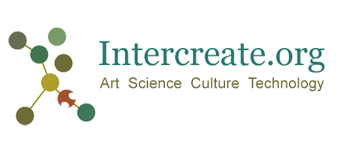Random Information Exchange – The Polytechnic

Dominic Smith collecting instruction sets from the New Plymouth public.
We are an Arts organization called the polytechnic. We are based in the North east of England and we are an arts based group with an emphasis on hand-on and distributed approaches to working with technology.
We would use this residency as an opportunity to take the Random Information Exchange from alpha 0.2 stage into a beta 0.1 development state.
The main participatory nature of this residency would be to set up a Bureau to handle the exchange of information, all of which will be based around the exchange of simple text (*.txt) files. These files can range from cooking recipes, directions for a walk, musical notation in the form of abc files, tablature or saved data for complex multimedia programming environments. The person depositing the data will also received a random piece of data in return.
A production unit will run alongside the bureau to produce derivations and modifications of the data (the text files) this can take many forms e.g. cookery, knitting and interactive media. Production tasks will be performed by mostly unskilled labor to ensure accidental modification
This project has previously ran as an alpha test for developing a participatory model that have been exploring. Bringing the Open Source philosophy that was inherent in the tools we chose to use (apache web server, mySQL Database and PHP) with us into the larger and more visible aspect of the information exchange project. The relation between the tools and end produce in this project being much like a painter deliberately leaving traces of their initial sketches on a canvas or a sculptor leaving evidence of the tools used in an objects construction. We are currently developing a set of visualization tools that will encourage participation by showing seemingly random projects developing, stalling, transforming and forking into new ideas in real time. This project is heavily reliant upon audience participation at both a local and international level.
Description: We will be developing and testing a beta version of an online tool we are developing. This tool is called the Random Information Exchange and can be found here:
UPDATED: http://www.randomexchange.info/rie03/rie03.html
In its current mode you are required to upload a basic set of instructions on a txt file and you receive a random set in return. For this residency we will take this into a much more useful area were all changes to projects can be visibly mapped and user projects begin to take on more conceptual depth.

An image from the resulting exhibition formed from the exchange of instructions submitted and received.
Throughout the duration of the residency we will set up a bureau that encourages people to upload and receive information. This set up can be a simple as a table a computer, a printer and a Polytechnic member to assist. Along side the Bureau will be a production unit that will have all equipment and materials necessary for participants to realise projects assigned by the bureau. There will be 2 polytechnic members on hand to aid with production and to advise with the re-upload of modifications to the original project.
Dominic Smith is an artist, programmer and musician, currently studying towards PhD with CRUMB at Sunderland University. In 2005- he co-founded Polytechnic: a new media arts organization in Newcastle http://ptechnic.org. His work has been shown widely across the UK and he has done many residencies.
Sneha Solanki communicates her practice through art which interrogates science and technology. Solanki often works in process-based environments; producing events and projects which utilise low-tech, open and collaborative methods. Her practice extends to sound, web, broadcast, and time-based temporal works.
Will Scrimshaw – I work with and write about sound, performance and interaction. My work often makes use of interactive technologies and is focused around theories of resonance, noise, feedback, embodiment and materialism. I am currently pursuing research into theories of sonorous individuation in relation to the work of Gilles Deleuze as part of my PhD study.
——
I also had the pleasure on my final day In New Plymouth of talking to some of the most excellent staff from Witt and WelTec about Open Source models and collaborative practice in the arts. I have pasted some useful links below that relate to what I talked about. They are in no particular order and some will be of more use than others but they will hopefully be a good introduction to the subject.
Dominic
——-
Polytechnic: See above for info on the poly
http://ptechnic.org
——-
Michael Mandiberg & Xtine Burrough: I mentioned the struggles and benefits of open sourcing your content via a publisher.
http://www.amazon.com/Digital-Foundations-Intro-Design-Creative/dp/0321555988
http://www.blog.digital-foundations.net/
http://wiki.digital-foundations.net/index.php?title=Main_Page
——-
OS and Hacker culture
http://www.catb.org/~esr/writings/cathedral-bazaar/
http://video.google.com/videoplay?docid=7707585592627775409
http://steinhardt.nyu.edu/faculty_bios/view/Gabriella_Coleman
http://www.electronicbookreview.com/thread/technocapitalism/voluntary
——-
Links to useful linux distributions
http://code.goto10.org/projects/puredyne/
——-
How to dual boot your lovely mac so you can choose OSX or Linux when you switch it on
http://www.mactel-linux.org/wiki/HOWTO
——-
